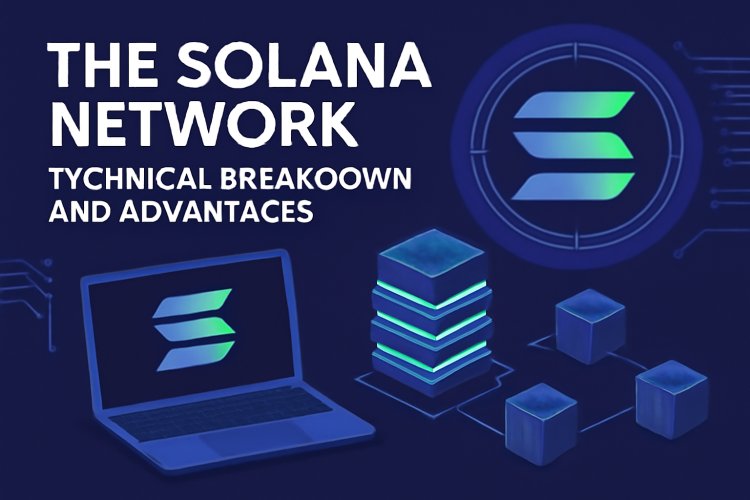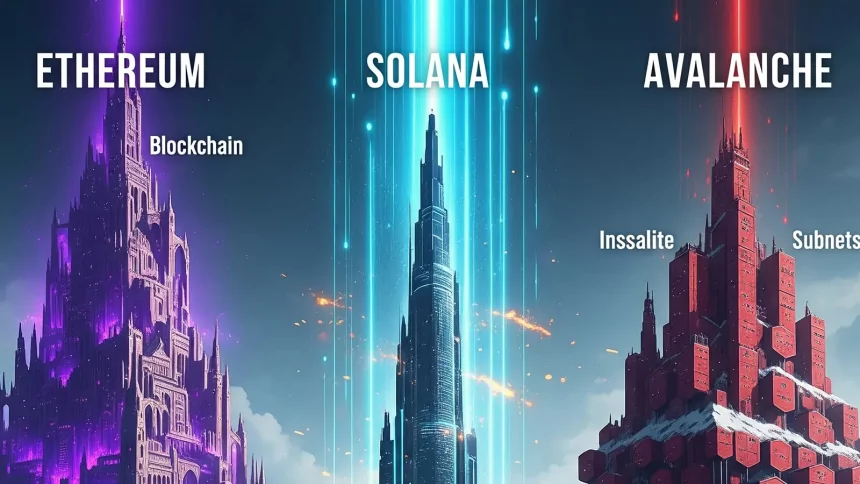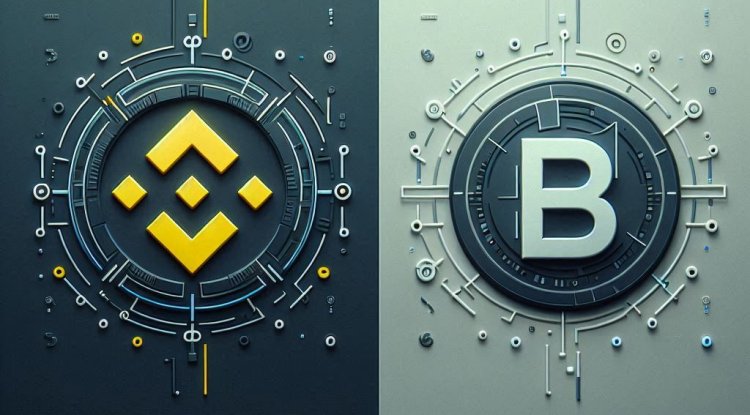Overview of Blockchains: A Comparison of Popular Ecosystems
An expert analysis and comparative guide on Ethereum, Binance Smart Chain, Cardano, and Polkadot. Learn about scalability, transaction speed, fees, and the essentials for memecoins.

The world of cryptocurrencies and blockchain technology is evolving at an unprecedented pace. As digital assets continue to redefine the financial landscape, understanding the underlying blockchains that power these innovations is crucial—especially when it concerns assets like memecoins. In this article, we delve into an expert-level overview of four pivotal blockchain ecosystems: Ethereum, Binance Smart Chain, Cardano, and Polkadot. We analyze their scalability, transaction speed, fees, and practical implications for emerging trends such as memecoins, with a strong focus on infrastructure, community support, and technological capabilities.
Introduction to Blockchain Ecosystems
Blockchain technology underpins cryptocurrencies over a decentralized ledger system that ensures security, transparency, and immutability. As blockchain networks evolve, they have given birth to new applications far beyond simple transactions. Platforms like Ethereum, Binance Smart Chain, Cardano, and Polkadot each offer unique advantages with specialized capabilities, allowing developers to innovate in areas ranging from decentralized finance (DeFi) to non-fungible tokens (NFTs) and, notably, memecoins.
The advancement of these blockchains has not only resulted in secure revenue streams and financial enterprises but has also carved pathways for community-driven projects with a significant focus on scalability, transaction speed, and cost-efficient operations. For memecoins—a category noted for their vibrant communities and rapid adoption—the underlying blockchain's infrastructure is vital.
Ethereum: The Pioneer of Smart Contracts
Launched in 2015, Ethereum revolutionized blockchain by introducing smart contracts that automate processes without intermediaries. Its robust and versatile ecosystem has made it the default platform for many decentralized applications (dApps).
Key Features
- Smart Contracts: Ethereum brought programmability to blockchain technology, enabling developers to build decentralized applications using Solidity, its proprietary programming language.
- Developer Community: The largest and most active development community drives continuous improvements and innovations.
- Security and Decentralization: Ethereum’s network design prioritizes security over scalability, though upgrades like Ethereum 2.0 are addressing these issues.
Scalability, Transaction Speed, and Fees
Ethereum's current network often faces congestion issues. Transaction fees (gas fees) can spike dramatically during periods of high network activity—posing a significant challenge for everyday traders and memecoin enthusiasts.
- Scalability: Limited by its proof-of-work system (transitioning to proof-of-stake), though future upgrades aim to significantly increase transaction throughput.
- Transaction Speed: Typical block times of 12-15 seconds, which can become a bottleneck during network congestions.
- Fees: Volatile gas fees that can render smaller transactions impractical.
Use Cases in Memecoins
For memecoins, Ethereum offers unmatched programmability and smart contract capabilities. However, high fees and slower transaction speeds can hamper rapid community movements, forcing projects to consider alternative chains.
For more detailed technical insights, explore Ethereum’s official documentation.
Binance Smart Chain: Speed and Cost Efficiency
Binance Smart Chain (BSC) emerged as an attractive alternative by focusing on lower fees and faster transactions without sacrificing compatibility with existing Ethereum applications.
Features
- Compatibility: BSC is fully compatible with Ethereum Virtual Machine (EVM), allowing for easy migration of dApps.
- Low Fees: With significantly lower transaction fees compared to Ethereum, BSC has become popular among traders and developers.
- Faster Transactions: Achieves quicker block times which make it suitable for high-frequency trading platforms and memecoin transactions.
Scalability and Performance
BSC leverages a consensus model (Proof-of-Staked Authority) that balances decentralization with performance, giving it an edge in terms of speed and scalability.
- Scalability: Supports a larger number of dApps due to its optimized consensus mechanism.
- Transaction Speed: Faster confirmation times make BSC an attractive platform for time-sensitive transactions.
- Fees: Consistently low fees encourage microtransactions, which are prevalent in memecoin ecosystems.
Ecosystem Impact
Projects on Binance Smart Chain benefit from the robust support of the Binance ecosystem. The platform’s infrastructure is robust enough for both mainstream and niche applications, particularly those with strong community support like memecoins. For updated price trends and network statistics, refer to Binance’s official website.
Cardano: Scalability and Peer-Reviewed Innovation
Cardano distinguishes itself through its academic approach to blockchain development. Designed by experts and built on peer-reviewed technology, Cardano emphasizes scalability, sustainability, and security.
Core Attributes
- Research-Based: Emphasizes scientific research and peer-reviewed evidence in its development process.
- Layered Architecture: Separates the transaction and computation layers, allowing for more flexibility and improved scalability.
- Sustainability: Employs a proof-of-stake system that is energy-efficient and designed for long-term viability.
Performance Metrics
- Scalability: Its layered design allows parallel transactions, reducing bottlenecks and improving scalability over time.
- Transaction Speed: While the current version presents moderate speeds, future updates promise enhancements.
- Fees: Low transaction fees owing to an efficient proof-of-stake model, making it conducive for smaller, frequent transactions such as those seen in the memecoin space.
Community and Technological Advancements
Cardano has cultivated a robust and informed community, emphasizing educational initiatives to bridge the gap between developers and end-users. This community driven emphasis on transparency and technological rigor appeals especially to investors wary of overhyped projects.
Explore Cardano’s roadmap and technological innovations at Cardano’s official portal.
Polkadot: Bridging Isolated Chains
Polkadot introduces an innovative approach to blockchain interoperability. Its ecosystem is based on the idea of enabling various blockchains to communicate seamlessly, breaking down silos that have historically limited innovation.
Key Technical Aspects
- Parachains: Unique parallel chains that connect to the main relay chain, providing specialized functionalities while ensuring interoperability.
- Interoperability: Seamlessly integrates heterogeneous blockchain networks, making it possible to share security, data, and liquidity.
- Community Governance: Emphasizes decentralized governance, where community members participate in protocol upgrades and decisions.
Performance and Scalability
- Scalability: Polkadot’s design permits high throughput as multiple chains process transactions simultaneously.
- Transaction Speed: Direct communication between chains contributes to lower latencies and faster transaction verifications.
- Fees: Competitive transaction fees, benefiting from distributed workloads across multiple parachains.
Application for Memecoins
For memecoin creators and traders, Polkadot’s interoperability allows for cross-chain integration, enabling the seamless migration of tokens between different ecosystems. This technological bridge can grow memecoin communities by tapping into diverse blockchain markets, thereby reinforcing network effects.
Further insights into Polkadot’s structure can be gleaned through its comprehensive whitepaper available on the Polkadot website.
Comparative Analysis of Major Characteristics
Below is a detailed CSV table that outlines the primary characteristics of the aforementioned blockchain ecosystems:
| Platform | Scalability | Transaction Speed | Fees | Community Support | Technological Capabilities | |
|---|---|---|---|---|---|---|
|
1
|
Ethereum
|
Upgrading via PoS; currently moderate
|
12-15 seconds per block
|
High and volatile
|
Massive, active developer base
|
Robust smart contract functionality, pioneering dApps
|
|
2
|
Binance Smart Chain
|
Optimized PoSA model; highly scalable
|
Faster block confirmations
|
Low and stable
|
Rapidly growing, Binance ecosystem
|
EVM compatibility, low-fee transactions
|
|
3
|
Cardano
|
Layered architecture enhances parallel processing
|
Moderate, with future improvements expected
|
Consistently low
|
Educated, research-focused community
|
Peer-reviewed, energy-efficient, sustainable
|
|
4
|
Polkadot
|
High – multiple parachains, parallel processing
|
Fast; inter-chain communication reduces latency
|
Competitive, cost-effective
|
Engaged, governance-driven community
|
Interoperable, flexible, governance centric
|
Analysis
- Scalability: Polkadot leads with its innovative parachain technology that allows for parallel processing, while Ethereum is in the midst of a transformative upgrade.
- Transaction Speed: Binance Smart Chain and Polkadot have the upper hand in transaction speed, making them more suitable for fast-moving markets.
- Fees: For memecoin enthusiasts and users dealing in smaller transactions, Binance Smart Chain and Cardano offer cost-effective solutions.
- Community Support: Ethereum's vast community helps in continuous innovation, while Cardano’s research-oriented user base contributes to long-term, sustainable development.
- Technological Capabilities: Ethereum stands out in smart contracts, Polkadot in interoperability, and Cardano in energy-efficient design.
Memecoins: Specifics in the Crypto Ecosystem
Memecoins have carved out a distinct niche in the cryptocurrency sphere. Born out of internet culture and powered by strong community support, these coins highlight the interplay of technology and social phenomena in the digital age.
Infrastructure Considerations
Memecoins often rely on blockchain infrastructures that offer:
- Low Transaction Fees: Essential for everyday microtransactions.
- High Scalability: To handle rapid network surges triggered by viral moments.
- Robust Security: To maintain trust amidst volatile market conditions.
Community Support
The community plays a critical role in the success of memecoins. Platforms that nurture vibrant, engaged communities tend to experience fast adoption and sustained interest. For example, communities on Ethereum and Binance Smart Chain have often rallied behind trending memecoins, amplifying their viral reach.
Technological Capabilities in Action
- Smart Contracts: Enable automatic compliance with predefined conditions and facilitate seamless transactions.
- Interoperability: Platforms like Polkadot allow memecoins to traverse different ecosystems—potentially expanding their reach and utility.
- Innovative Features: Cardano’s energy-efficient model and continuous research can attract projects focusing on sustainability in the memecoin domain.
Real-World Examples
- Dogecoin and Shiba Inu: Initially built on simpler blockchains but have evolved into symbols of community resilience and viral marketing.
- Emerging Projects: Innovative memecoins are exploring cross-chain capabilities to leverage the strengths of multiple ecosystems—demonstrating an adaptive technological framework that is continuously evolving.
For further reading on memecoin trends, consider visiting reputable sources like CoinDesk and The Block.
Conclusion and Call to Action
The blockchain ecosystem is as diverse as it is dynamic. Ethereum, Binance Smart Chain, Cardano, and Polkadot each present distinct advantages that cater to a wide range of applications—from high-end decentralized finance to vibrant memecoin projects. Whether you are a developer, investor, or crypto enthusiast, understanding these ecosystems will empower you to navigate the digital landscape with confidence.
As the technology matures, cross-chain interoperability and community engagement will shape the future of blockchain innovations. Staying informed and agile in this rapidly evolving market is essential. If you found this analysis insightful, explore more detailed guides and expert insights on our website. Join the conversation, harness the power of blockchain, and be a part of the next wave of digital revolution.
Ready to dive deeper? Subscribe to our newsletter for the latest insights, trends, and expert tips in the world of crypto. Don’t miss out—your next breakthrough in blockchain technology is just a click away!
Share
What's Your Reaction?
 Like
0
Like
0
 Dislike
0
Dislike
0
 Love
0
Love
0
 Funny
0
Funny
0
 Angry
0
Angry
0
 Sad
0
Sad
0
 Wow
0
Wow
0

















